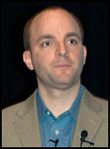In the Cattle Markets
Context needed on herd expansion.

Glynn Tonsor
As expected, the Cattle Inventory report released by USDA Jan. 27 continues to receive notable attention. As implications from that report regarding herd expansion are debated, some context is warranted.
The report estimated a 1.4% year-over-year increase in the number of heifers held back as replacements. This is the first year-over-year increase estimated since 2006 and has signaled to many that the national beef cow herd may have initiated its expansion. However, a deeper analysis importantly reveals that this increase is largely being driven by historically low retention signaled by the January 2011 report. Narrowly, this year's estimate of 5.21 million heifers being retained is actually the lowest observed (besides 2011) since 1986, when 5.17 million heifers were retained as replacements.
Keeping proper context is important as analysts can easily make too much out of year-over-year changes. Given the broader interest in the situation of beef herd expansion, deeper recognition of the changing nature of cattle cycles is similarly warranted. In particular, observation of cycles "flattening" over time is critically important.
Stakeholders throughout the industry are encouraged to recognize the broader, longer-term changes under way in the U.S. beef industry that are leading to reduced fluctuation in beef cow numbers, along with the more contemporary discussion of improved expected cow-calf profitability, to keep the dynamic discussion of herd expansion in proper context.
In short, while the national beef cow herd may well be initiating an expansion phase, it would be ill-advised to expect inventories to rebound back to the notably larger inventory levels recalled by many producers.







